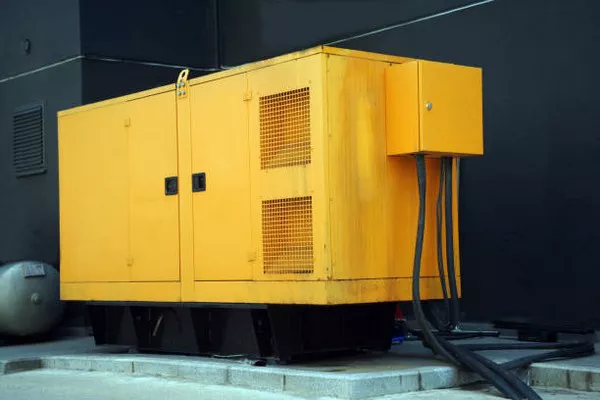Electricity has become an integral part of our daily lives, powering everything from the lights in our homes to the devices we use for work and entertainment. But have you ever wondered how this essential energy source is generated? Generators play a pivotal role in the generation of electricity, converting various forms of energy into electrical power. In this article, we will delve into the inner workings of generators, shedding light on how they work and the crucial role they play in our modern world.
The Basic Principle of Generators
Generators are devices that convert mechanical energy into electrical energy through the application of Faraday’s law of electromagnetic induction. This fundamental principle, formulated by Michael Faraday in the early 19th century, explains how a change in magnetic field within a conductor induces an electromotive force (EMF) or voltage in the conductor. This concept is at the heart of how generators function.
Components of a Generator
Rotor: The rotor is the moving part of the generator. It consists of a shaft and a coil of wire, which rotates within a magnetic field.
Stator: The stator is the stationary part of the generator, typically encasing the rotor. It contains coils of wire that surround the rotor and are connected to the output terminals.
Magnetic Field: Generators employ a magnetic field to create the necessary conditions for electromagnetic induction. This field can be generated by permanent magnets or electromagnets.
How Generators Work
Mechanical Energy Input: Generators require an external source of mechanical energy to function. This energy can be harnessed from various sources, such as:
- Steam turbines in power plants
- Wind turbines in wind farms
- Water turbines in hydroelectric facilities
- Gas or diesel engines in portable generators
- Human effort in hand-cranked generators
Rotation of the Rotor: When the mechanical energy source is applied, it causes the rotor to spin within the magnetic field generated by the stator.
Electromagnetic Induction: As the rotor rotates, the coil of wire within it experiences a changing magnetic field. According to Faraday’s law, this change induces an EMF in the wire. The direction and magnitude of the induced voltage depend on the speed of rotation, the strength of the magnetic field, and the number of turns in the coil.
Output Voltage: The induced voltage is then transferred through the output terminals of the generator, where it can be used as electrical power. The voltage produced can be either direct current (DC) or alternating current (AC), depending on the design of the generator.
Types of Generators
Generators come in various types, each suited for different applications. The two primary categories are AC generators and DC generators, each with its unique features.
Alternating Current (AC) Generators: AC generators are the most common type and are used in most electrical applications. They produce alternating current, where the direction of current flow periodically reverses. AC generators can be further categorized into single-phase and three-phase generators, depending on the number of coils in the stator.
Direct Current (DC) Generators: DC generators produce a constant, unidirectional flow of electricity. While they are less common today, they have their applications, such as in certain types of industrial machinery and early electrical systems.
Applications of Generators
Generators are used in a wide range of applications, providing backup power, enabling remote operations, and serving as the primary power source in many settings:
Backup Power: Generators are essential for providing backup power during electrical outages. Hospitals, data centers, and critical infrastructure often rely on standby generators to ensure continuous operation.
Remote Areas: In remote or off-grid areas, generators powered by diesel, gasoline, or renewable energy sources such as solar panels and wind turbines can supply electricity.
Construction Sites: Portable generators are commonly used at construction sites to power tools and equipment where no fixed power source is available.
Power Plants: Large-scale power plants, whether based on coal, natural gas, nuclear energy, or renewable sources, use generators to convert mechanical energy into electricity on a massive scale.
Automotive Alternators: In automobiles, alternators act as generators, converting mechanical energy from the engine into electrical power to charge the battery and run the vehicle’s electrical systems.
Aerospace: Generators are employed in aircraft to produce electrical power for various systems, including lighting, avionics, and instrumentation.
Efficiency and Maintenance
Generators can vary in efficiency, and their maintenance requirements depend on factors such as the type, size, and application. Proper maintenance is crucial to ensure the generator’s long-term reliability and performance. Here are some key aspects to consider:
Fuel Efficiency: For generators running on fossil fuels (e.g., gasoline, diesel), fuel efficiency is a significant concern. Regular maintenance and tuning are essential to optimize fuel consumption and reduce emissions.
Lubrication: Generators with moving parts require regular lubrication to reduce friction and wear. Maintaining appropriate oil levels and changing the oil at recommended intervals is critical.
Cooling: Generators can generate a significant amount of heat during operation. Adequate cooling systems, such as air or liquid cooling, are essential to prevent overheating and ensure efficient performance.
Inspections: Regular inspections of electrical connections, wiring, and safety features are necessary to identify and rectify any potential issues.
Load Testing: Periodic load testing ensures that the generator can handle its intended workload. This helps identify any weaknesses or performance issues that may need attention.
Conclusion
Generators are the unsung heroes of the modern world, quietly and reliably providing electricity in various settings. Whether it’s for backup power during outages, supplying energy in remote areas, or supporting industrial processes, generators play a vital role in ensuring the electricity we depend on is readily available. Understanding how generators work is not only fascinating but also essential for efficient and reliable power generation. With advancements in technology and a growing emphasis on sustainability, generators continue to evolve, offering new ways to harness energy and meet the world’s increasing electricity demands.


